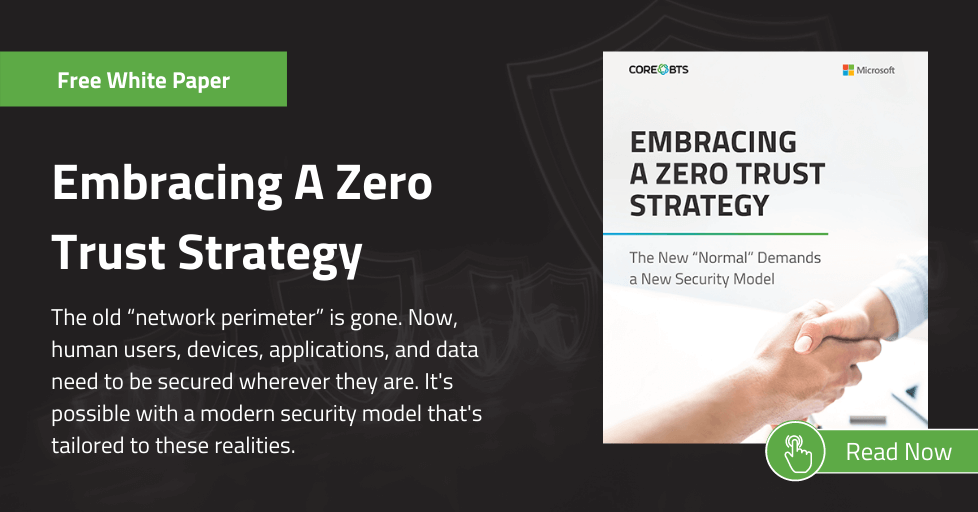AST is vital for protecting apps and data from cyber threats. AST requires a varied approach including DAST, SAST, and IAST, and must be integrated early in development through DevSecOps. See how we can help you bulletproof your business and evolve your security foundation.
In an era where cyber-attacks are prevalent, the value of application security testing is ever-increasing. A single vulnerability can expose sensitive data to nefarious entities, leading to difficult-to-resolve outcomes for the business and its clientele. As applications become more complex, interwoven with third-party integrations and an aging application portfolio, visibility into the security aspect of these applications diminishes.
Increased opacity can be an invitation for malicious actors to exploit unnoticed vulnerabilities. Robust security testing plays a key role by ensuring that authentication, encryption, and logging are enabled to fortify your apps against potential threats. This protects sensitive data, preserves the integrity of applications, and ensures that functionality remains unhindered.
While application security testing may be well understood in the IT department, the time has come for organizations to implement a company-wide ethos where security is ingrained in every stage of application building, testing, and usage. Organizations can harden their applications and employ stringent measures to prevent unauthorized access by extending visibility and control over the entire application portfolio.
Continue reading to learn how to effectively integrate security testing into your software development lifecycle and cultivate a resilient ecosystem against evolving cybersecurity threats.
Understanding the Fundamentals of Application Security Testing
At the core of cybersecurity, Application Security Testing (AST) is a critical component that involves evaluating applications for security vulnerabilities that somebody might exploit. It is a comprehensive approach that includes a range of testing and analytical techniques employed through the software development process to rectify security issues early on.
Security vulnerabilities vary in their nature and impact. These could range from SQL injection and Cross-Site Scripting (XSS) to security misconfigurations and improper session handling. Being conscious of these vulnerabilities enables businesses to employ strategic measures in mitigating risks.
Employing the Right Application Security Testing Tools
For thorough and effective application security testing, this suite of techniques is indispensable:
- Dynamic Application Security Testing (DAST): DAST involves examining the application’s running state, typically from an outsider’s perspective. It mainly focuses on identifying vulnerabilities exposed in a running application.
- Static Application Security Testing (SAST): Unlike DAST, SAST evaluates the application’s source code, bytecode, or binary code when the application is not running. This enables the identification of vulnerabilities at an early stage.
- Interactive Application Security Testing (IAST): Combining elements of both DAST and SAST, IAST assesses the application from within, utilizing agents to monitor the application’s behavior and the environment for security anomalies during its runtime.
- Penetration Testing: This is a simulated cyber attack where professionals try to breach the application’s security, providing a real-world analysis of its security posture.
Combining these techniques ensures a more comprehensive and holistic coverage of security vulnerabilities. Each of these techniques comes with its own tools, like SAST tools for source code analysis or DAST tools for active testing. These tools play a pivotal role in identifying and remediating security issues. For instance, SAST tools help detect problems early in the SDLC (Software Development Lifecycle), DAST tools help identify runtime security issues, and Penetration Testing tools help understand the real-world impact.
Securing Open-Source Components in Your Application
Open-source components expedite the development process and provide efficient, actionable solutions. However, utilizing open-source libraries also presents security challenges. If not adequately vetted, these components could harbor vulnerabilities that serve as entry points for attackers.
Software Composition Analysis (SCA) is crucial in securing open-source components. SCA tools analyze an application’s open-source dependencies for known security vulnerabilities and license compliance issues. This allows developers to see potential risks associated with open-source components and facilitates informed decision-making.
Managing and securing open source components necessitate a proactive approach. Here are some practical tips:
- Stay Informed: Stay informed about vulnerabilities and updates related to the open-source components in use.
- Minimize Dependencies: Limit open-source components to only what is necessary.
- Regularly Update Components: Ensure open-source libraries are up-to-date and free from known vulnerabilities.
- Establish Security Policies: Implement policies that require vetting open-source components for security issues.
- Educate Your Team: Ensure your team is aware of best practices for securely using open-source components.
Also, familiarize yourself with common gaps in environmental security to safeguard your application portfolio effectively.
Adopting DevSecOps for Continuous Application Security
DevSecOps, a philosophy integrating security into the DevOps process, is fundamental in modern application development. It ensures that security is not an afterthought but is embedded throughout the SDLC.
By incorporating security early in the SDLC, DevSecOps enables teams to detect and rectify vulnerabilities at the early stages of development. This reduces the cost and effort required to address security issues and the time to market.
Implementing a DevSecOps pipeline requires a shift in culture and processes. Here are steps to effectively implement DevSecOps:
- Collaborative Culture: Foster a culture where development, operations, and security teams work collaboratively.
- Automate Security Testing: Utilize automated security testing tools and integrate them into the CI/CD pipeline.
- Continuous Monitoring: Monitor applications and infrastructure continuously for security anomalies.
- Rapid Response: Develop processes to quickly address security incidents when they occur.
- Feedback and Improvement: Continuously gather feedback and improve security practices.
Strengthening Your Security Posture Through Diligent Testing
Continuous security testing throughout the SDLC enables organizations to proactively detect and address security risks, which is far more cost-effective and efficient compared to reacting to breaches once they occur. This proactive approach emphasizes a culture of security awareness and shared responsibility, an aspect that is critical in today’s interconnected world. As such, a strong security posture is not only about tools and processes but also about culture and continuous improvement.
As cyber threats evolve, a robust application security strategy is more pressing than ever. Ensuring that applications are hardened, and features like authentication, encryption, and logging are enabled can make the difference between a thriving enterprise and one that falls victim to data breaches and loss of client trust.
For many organizations, having a partner that can share expertise, experience, and guidance makes all the difference. Contact us to learn how Core BTS can help your organization realize the advantages of application security testing and position itself for success in an ever competitive and increasingly complex digital landscape. Your investment in securing your applications is an investment in your business’s long-term health and viability.





